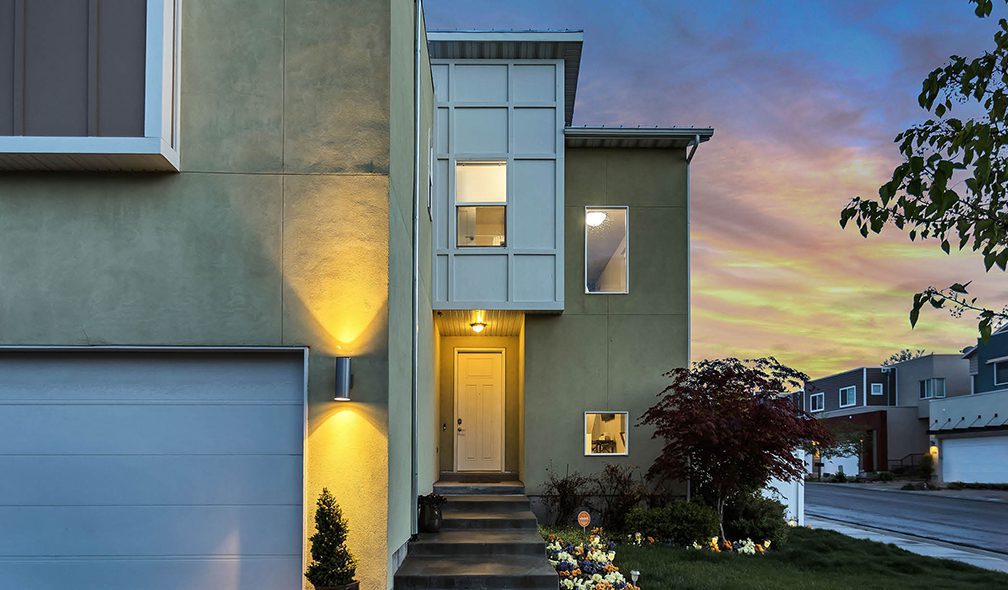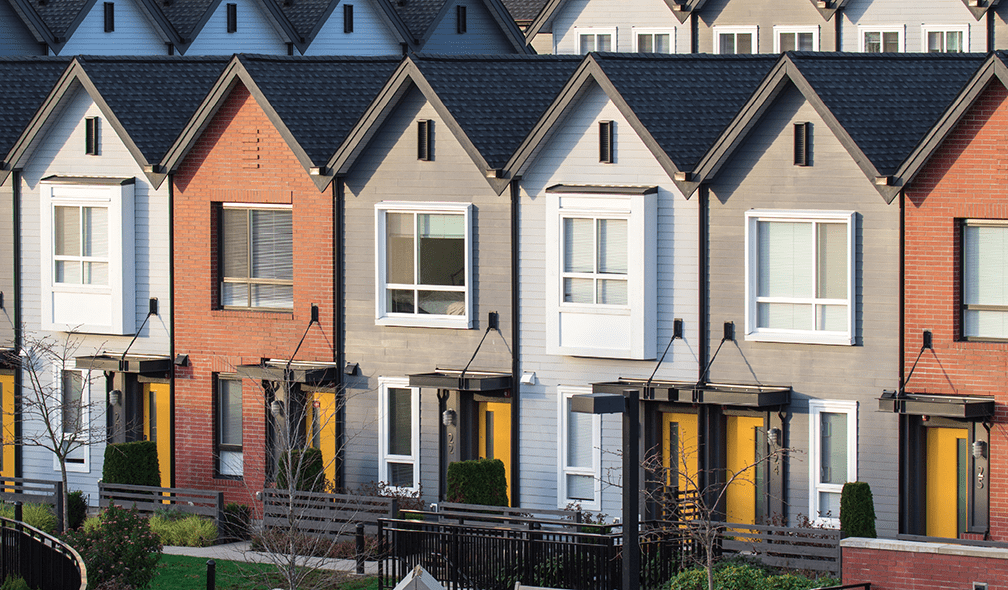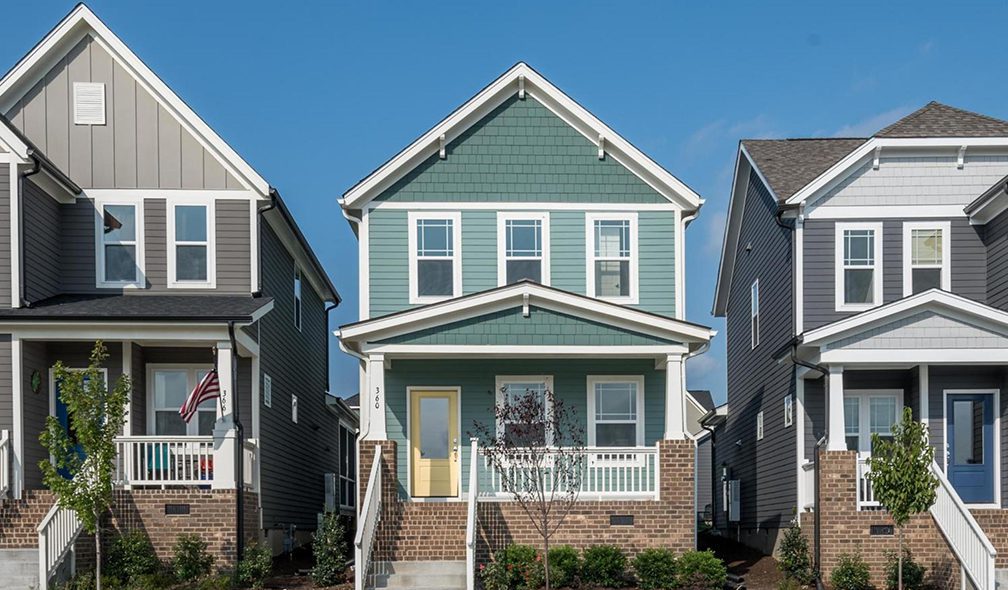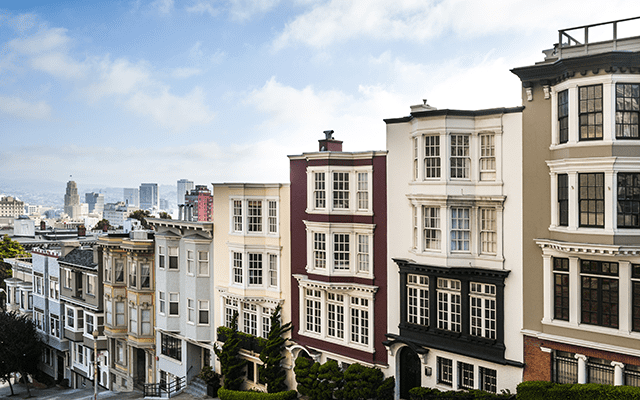New Opportunities for Medium-Density Residential
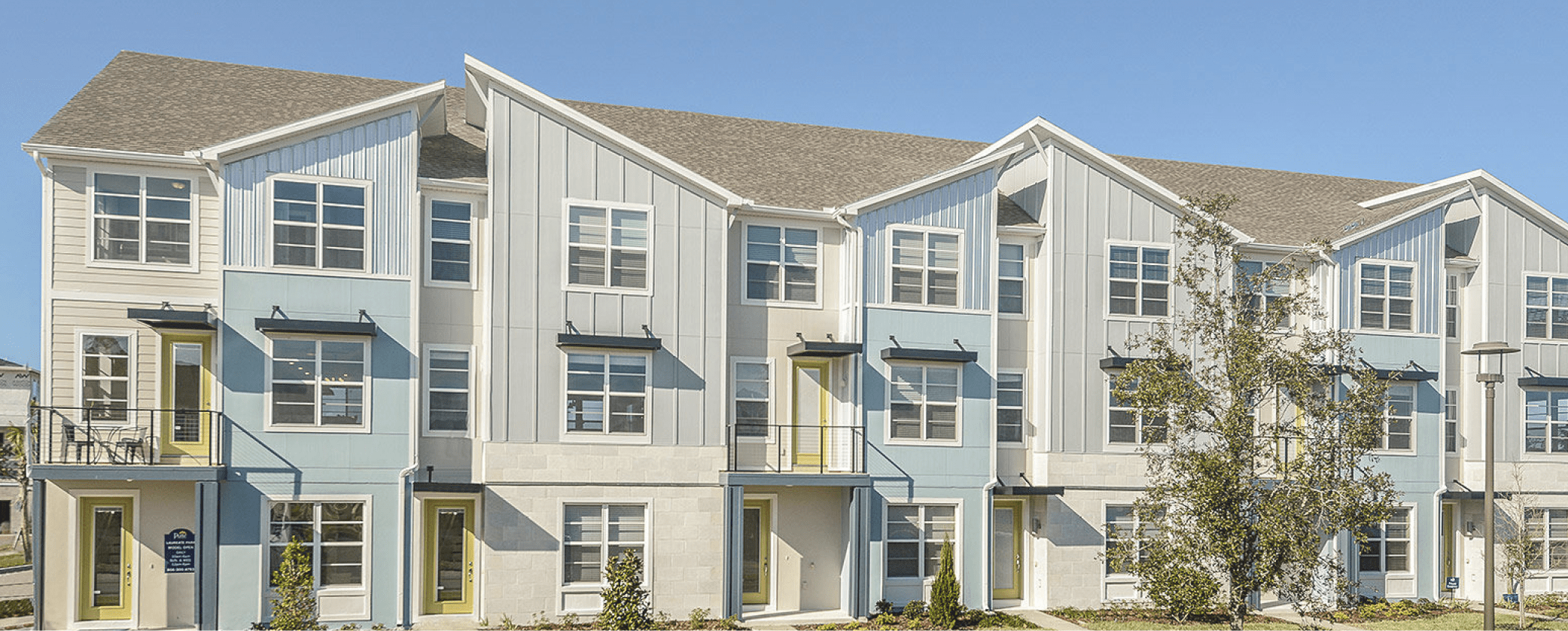
- Attached homes account for approximately 12.1% of for-sale residential construction across the country, and the results of RCLCO’s 2018 Housing and Community Preference Survey suggest this product segment is underserved, so there is even greater opportunity for developers and builders to meet demand.
- This is further indicated by the fact that demonstrated demand for attached housing has increased rapidly since the Great Recession, with attached new home starts increasing 179% since 2010, approximately 1.7 times faster than growth in detached new home starts.[1]
- Medium-density housing[2] has the most appeal for buyers without children, both young and old, who make up a growing share of the housing market.
- Market trends show that medium-density homes are an increasingly important component of a well-diversified MPC segmentation program, and are already demonstrating success as suburban and urban infill products.
RCLCO’s recent Housing and Community Preference Survey found that even though the conventional single-family detached home remains the most desirable for-sale residential product type, approximately 19% of consumers would consider purchasing some type of attached townhouse or plex product and 5% would consider a condominium flat.
When consumers who expect to buy a home in the next 24 months were asked where they would most prefer to live, approximately one-half said they prefer an area with a mix of homes, shops, and businesses, compared with less than 20% who said they would like to live in a suburban, mostly residential area. The aspiration for single-family detached living remains strong, but is often priced beyond the reach of potential new homebuyers in their desired locations. Homebuyer prospects, particularly those seeking established locations with a mix of housing, shops, and employment, must often consider the trade-offs among commuting from a new home in a distant suburb, buying a resale home closer-in, buying a new medium-density home in residential areas of the city or close-in suburbs, or purchasing a similar product in a master-planned community (MPC) with the desired location attributes. RCLCO’s consumer research shows that given the option in the right location, a sizeable share of the market will purchase attached housing for either lifestyle or affordability.

The Swift by Edward Andrews Homes, Grant Park Neighborhood, Atlanta Georgia
Edward Andrews Homes has a number of townhome communities in various urban and suburban infill locations around metro Atlanta. CEO Paul Corley says “we focus on opposite ends of the barbell: millennials and boomers. Both these groups have strong preference to be in or close to mixed-used development. They share many of the same wants/desires like being close to activity and job centers. Due to the increase in density, townhomes allow us to offer attainable housing in “A” locations like Buckhead, Grant Park, Roswell, and Alpharetta. We believe to be able to continue offering attainable options in “A” locations we will need to look at condos/flats as we move forward. I believe buyers prefer the townhomes but density of condos/flats will dictate they need be a product we offer.”
The higher density of attached housing is, of course, not what attracts many consumers—it is what they potentially get with that density, i.e. a more attainable price; shorter commute with better proximity to shopping, services, and jobs; shared open space; a more walkable neighborhood; lower maintenance; and, in some cases, lower transportation costs. These characteristics hold true of medium-density product in both MPCs and urban/suburban infill locations. New urbanist neighborhoods such as Denver’s Stapleton, Orlando’s Laureate Park at Lake Nona, and Salt Lake City’s Daybreak command a price premium over otherwise similar homes in less desirable neighborhoods. In many cases, buyers are making a trade-off between new medium-density homes in attractive locations and older detached resale options. Although lifestyle is an important consideration for many households choosing to purchase higher-density housing, affordability is particularly important for younger households. In suburban Washington, D.C., Craftmark Homes has demonstrated innovation in medium-density housing, including townhome-style structures that actually spread three condominium units across five stories. Many infill communities with medium-density housing tend to be positioned as lifestyle product, rather than a value orientation, which has appealed to buyers with smaller households that work in close-in job centers.
RCLCO’s consumer survey results indicate substantial interest in attached product across the age spectrum, with approximately 16% to 22% of respondents in each age segment saying they could consider the home type, while interest in condominiums was highest for the youngest and oldest buyers. Younger buyers considering medium-density homes appear to be motivated in part by more attainable price points given that they typically have more limited ability to make a down payment and obtain financing. A large share of older homebuyers, on the other hand, no longer want the maintenance responsibilities associated with a detached home. Additionally, some middle-aged buyers, including those who are recently divorced and want a smaller home, or travel frequently and prioritize lower-maintenance living, are also buying such housing products at many of the top-selling MPCs. Marketing professionals at some MPCs report that single women often find that medium-density housing product offers a more affordable entry point to their communities as well as an additional sense of security.
Exhibit 1: Share of People Who Would Consider Particular Home Type by Age, RCLCO Consumer Research (2018)
Source: RCLCO
A key consumer attribute influencing homebuyer interest in attached homes and condominiums is the presence and age of children in the household. In the RCLCO survey, households without children expressed higher levels of interest in medium-density housing. Families with children at home account for 31% of households in the U.S. and 38% of all home purchasers, while households without children at home account for about 62% of home purchases. In RCLCO’s consumer preference survey, single households with no children have the highest stated preference for attached housing, while about a third of couples without kids would similarly consider purchasing such housing products. Even 20% of couples with children under age 18, the segment with the highest preference for single-family detached living, would consider a single-family attached home or townhome.
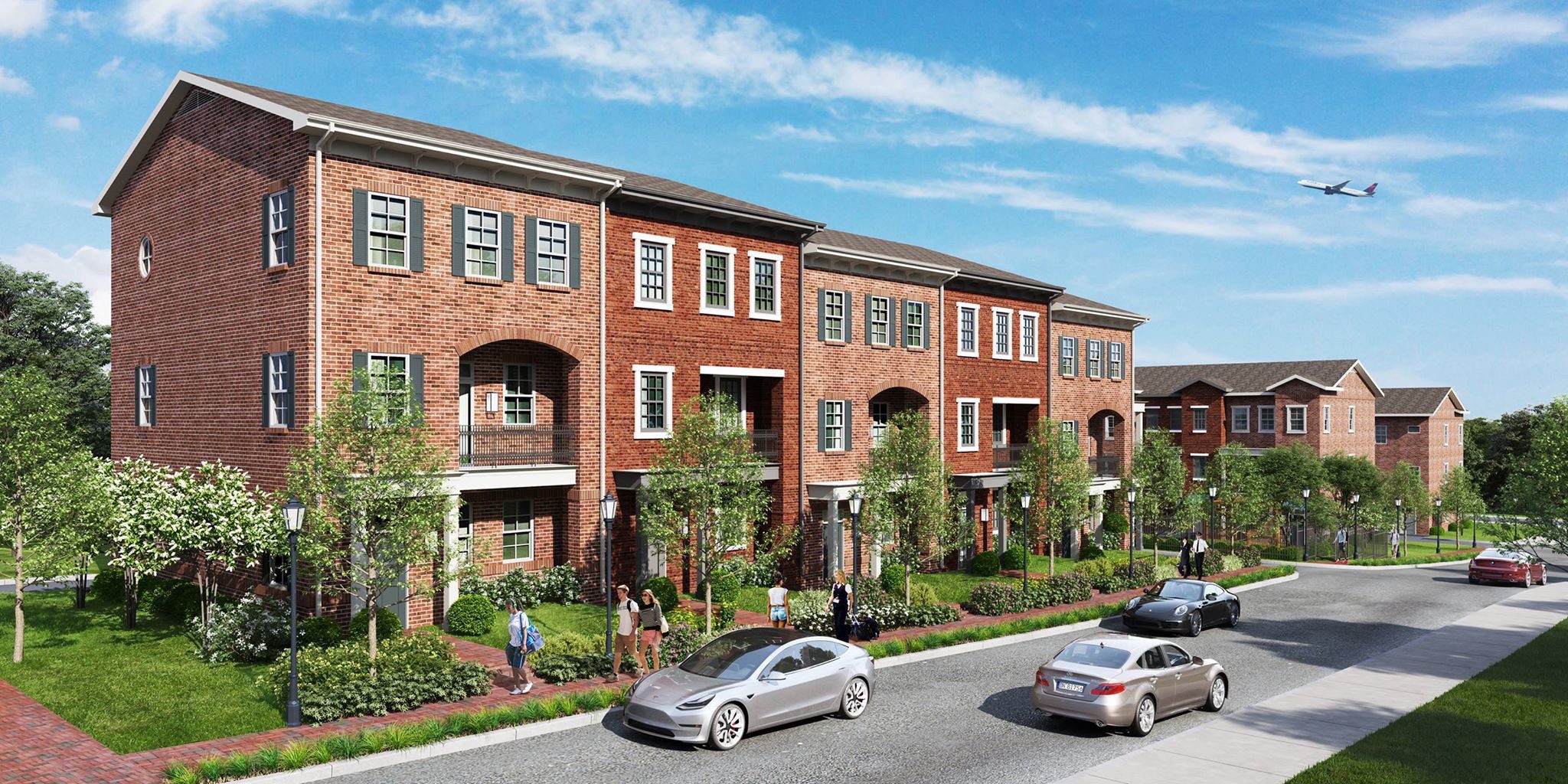
Temple Square by Windsor Stevens/Air Realty, College Park, Georgia
Rod Mullice, CEO of Windsor Stevens/Air Realty, developer of Temple Square near the Atlanta airport, says “our target buyer includes women in ‘pink collar’ jobs: college-educated women working in jobs with a significant female concentration, including flight attendants, nurses, teachers, office administration, and so on. Temple Square is designed to meet the needs of these buyers by providing a great location, smart technology, good design, and social spaces so they can connect with their neighbors.”
Although the range of size preferences varies widely, as shown in Exhibit 2 below, the most preferred size range for a single-family detached home among the surveyed households is 2,000 to 2,999 square feet, while the most preferred size range for a townhome or condominium flat among the surveyed households is 1,500 to 1,999 square feet. It is also worth noting that about 36% of those that prefer a single-family detached home are interested in buying a home under 2,000 square feet, which suggests another way of addressing the affordability challenge is offering a larger share of smaller square footage homes.
Exhibit 2: Home Size Preference by Home Type, RCLCO Consumer Research
Source: RCLCO
In terms of neighborhood factors, the consumer research indicates buyers who prefer an urban or suburban neighborhood with a mix of uses, including homes, shops, and businesses, are more likely to be interested in medium-density housing. This finding aligns with comments earlier this year by the National Association of Home Builders (NAHB) stating that attached home construction is increasing because of growing interest in medium-density neighborhoods in amenity-oriented walkable environments. MPCs offer just such a setting, and communities across the country are offering a range of housing types to target this important market segment.
Exhibit 3: Home Type Preference by Preferred Neighborhood, RCLCO Consumer Research
Source: RCLCO
Many of the MPCs among RCLCO’s annual ranking of the top-selling communities offer medium-density new home options. In fact, 12 of the top 15 communities of 2018 currently offer attached homes and/or condominium flats. Townhomes stand out as the most prevalent medium-density product type at major MPCs, as they are offered at all 12 of these communities and in at least two cases accounted for 35% to 40% of total community home sales last year. These successful MPCs offer townhome product in multiple configurations, including two- and three-story homes with either front- or rear-loaded garages. At Stapleton, for example, townhome product is available in modern designs, such as rowhouse structures more commonly found on the East Coast and San Francisco-style homes with large front porches and peaked roofs.
Exhibit 4: Current Medium-Density Home Offerings at Top Master-Planned Communities
Click table headers to change sorting
Source: RCLCO
The diverse array of townhome configurations and designs is allowing top-selling MPCs to successfully target multiple market audiences simultaneously, which has supported higher overall absorption rates. Based on conversations with community contacts, the orientations and positioning of townhomes can generally be grouped into three categories:
- Entry-Level: These townhomes primarily target younger singles and couples with small floorplans at relatively affordable price points. Although these buyers typically do not currently have children at the time of purchase, they often desire a third bedroom because of plans to have children in the future.
- Move-Up: Move-up townhomes appeal to buyers who may be upgrading from a smaller condominium or townhome unit in an inferior location. This orientation appears to be more common in more expensive markets where detached homes remain out of reach for a larger share of buyers.
- Lifestyle: Lifestyle townhomes are offered at premium pricing and target buyers who could afford a single-family home but prefer a townhome because of the convenience of a lower-maintenance lifestyle or location in a desirable area at lower price points relative to detached homes. The product is not restricted to mature, move-down buyers, however, as several surveyed communities report that this home type attracts a significant number of single and couple working professionals.
Top-selling communities report that location is a critical success factor in ensuring the appeal of townhomes to the appropriate market segment while maintaining clear segmentation among the various townhome product lines. At Daybreak, entry-level townhomes are integrated into single-family neighborhoods, while move-up townhomes are mostly clustered around the town center with more immediate access to retail and community event areas. Lifestyle townhomes, on the other hand, are typically situated either fronting or backing up to a lake. At other surveyed communities, lifestyle-oriented townhomes can also be found near pocket parks, open space, or other amenities that support the higher prices of the product type.
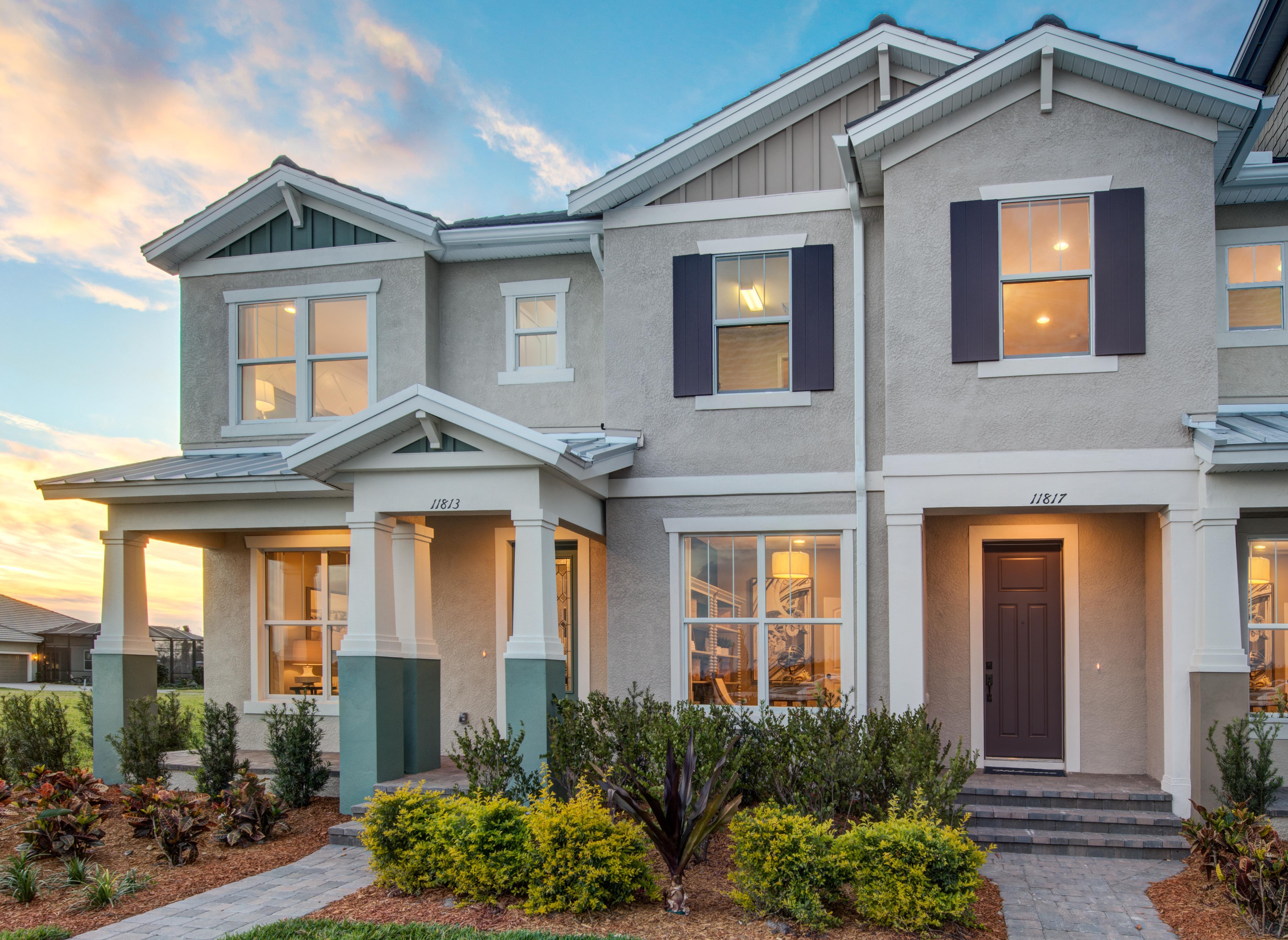
Mallory Park by Pulte/Divosta, at Lakewood Ranch, Florida
Lakewood Ranch, the second fastest selling MPC in the country, has had significant success with townhomes, including their Mallory Park neighborhood built by Pulte/DiVosta. Mallory Park is a family-oriented community with both single- family detached homes and townhomes. Their Foxtail townhome model has been a top seller, featuring an efficient open layout, courtyard, and dual owner’s suites.
In addition to townhomes, medium-density residences currently offered at the 15 top-selling communities include duplexes, plex product, courtyard-style homes, and condominium flats, which represent additional opportunities to diversify community offerings and increase capture rates of specific market segments. Duplexes in most cases appeal primarily to entry-level buyers, and community contacts stress the importance of maintaining moderate price points in order to remain competitive with detached resales. Courtyard-style product at Summerlin, which arranges both one- and two-story attached units around a central courtyard, is attracting an array of buyers, including first-time homeowners as well as more mature seasonal residents from other markets. Condominium flats at Lakewood Ranch have also attracted a more mature demographic of lifestyle buyers. These units are particularly appealing to buyers who are transitioning into retirement because of the extra amenities associated with a golf course community.
Medium-density homes are likely to account for an increasing share of sales at major MPCs moving forward, as sources report they are seeking to introduce additional attached product lines into their development programs while actively exploring opportunities for condominium flats. Such considerations are driven by both supply- and demand-side factors. Rising development costs, including land, labor, and materials, have made attached homes more profitable for many developers, especially in higher-cost markets. The oldest millennials are now entering the prime home-buying phase of life and many are interested in attainable entry-level homes, while Baby Boomers continue to retire and seek lower-maintenance lifestyles. These broader market trends suggest that medium-density homes are likely to represent a growing share of new residential product in infill locations and become an increasingly important component of a well-diversified segmentation program at MPCs.
Article and research prepared by Gregg Logan, Managing Director, and Morgan Zollinger, Senior Associate.
References
[1] New Privately-Owned Housing Units Started in the United States, by Intent and Design; accessed via FRED
[2] For the purposes of this article, medium-density housing is considered for-sale housing that is higher density than single-family detached homes but lower density than midrise and highrise construction. In terms of units per acre, it is typically in the 10 to 20 unit per acre range, in plex or row house configurations, but can also include a range of attached or semi-attached types of dwelling units, including stacked townhomes at as high as 28 units per acre. Townhomes are the most popular product type in this category, but stacked flats, coach homes and other popular housing types are also included.
Cover image: Briarcliff Townhomes by Pulte at Laureate Park MPC, Orlando
Disclaimer: Reasonable efforts have been made to ensure that the data contained in this Advisory reflect accurate and timely information, and the data is believed to be reliable and comprehensive. The Advisory is based on estimates, assumptions, and other information developed by RCLCO from its independent research effort and general knowledge of the industry. This Advisory contains opinions that represent our view of reasonable expectations at this particular time, but our opinions are not offered as predictions or assurances that particular events will occur.
Related Articles
Speak to One of Our Real Estate Advisors Today
We take a strategic, data-driven approach to solving your real estate problems.
Contact Us
